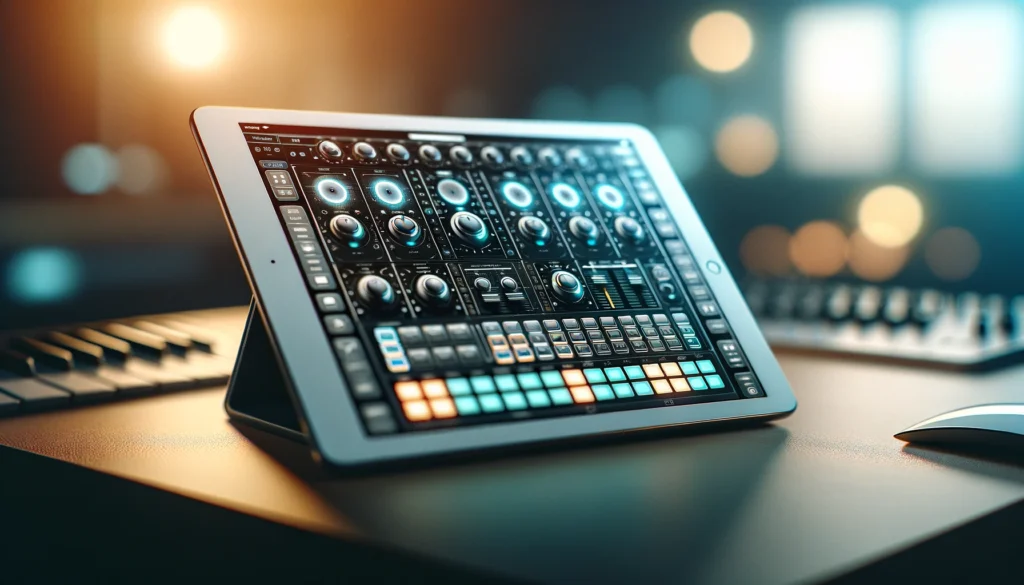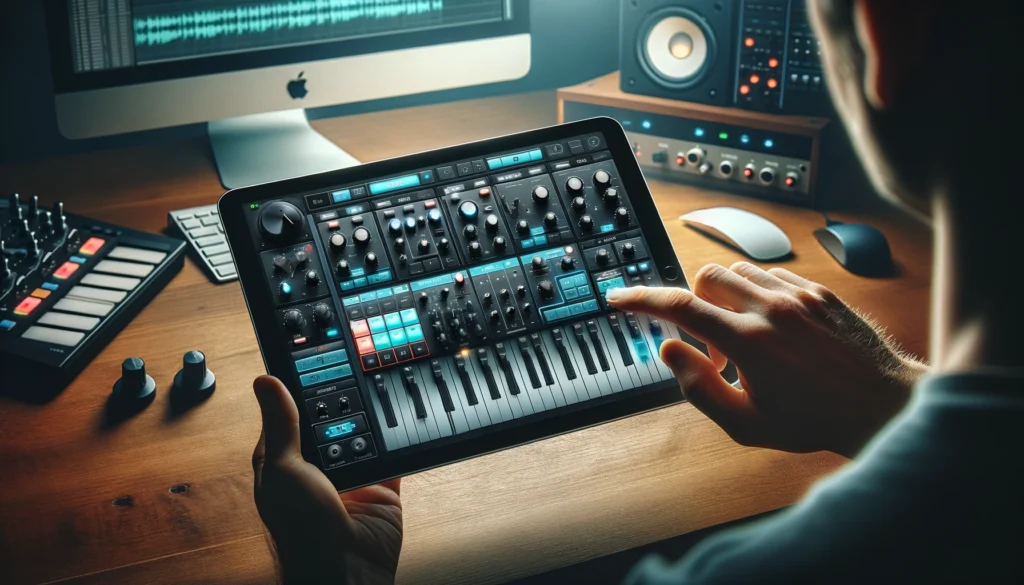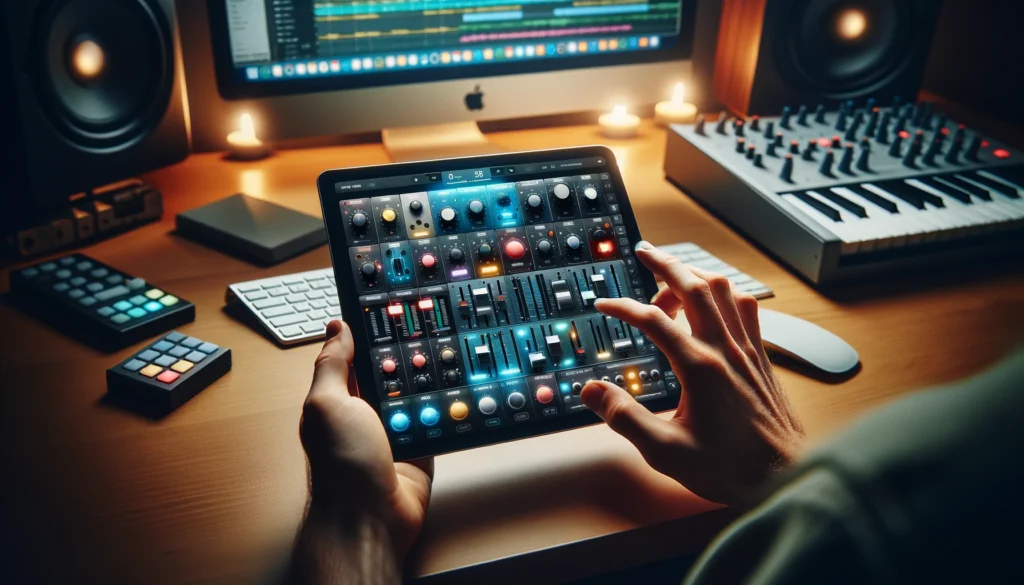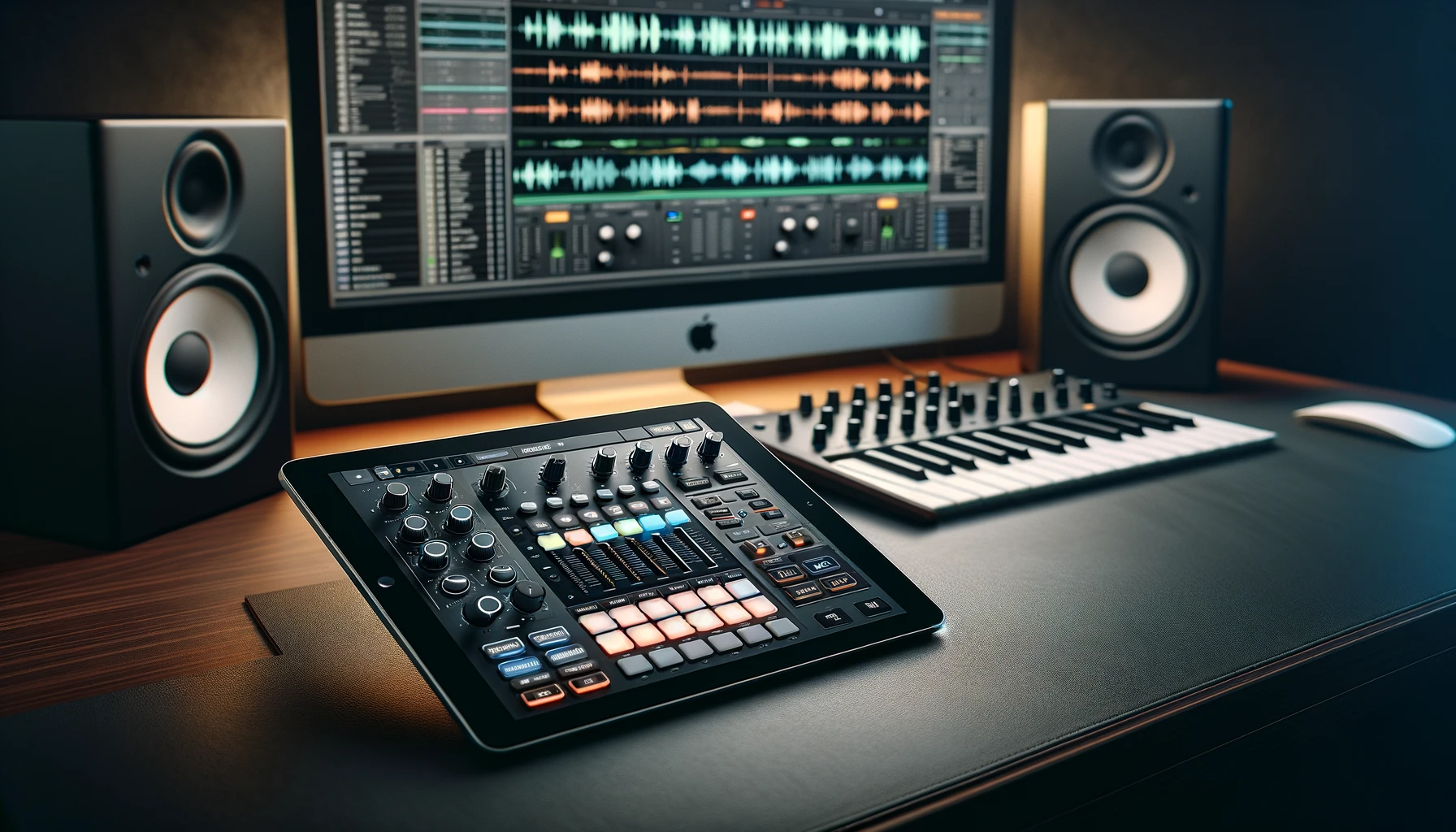As a DJ, have you ever wondered if you can use your iPad as a MIDI controller to mix tracks and add effects?
With the right apps and connectivity gear, your iPad can transform into a versatile MIDI controller for DJ software, instruments, stage shows, and more.
Let’s dive in and explore how to leverage your iPad for MIDI control in the studio and beyond…
Can I Use My iPad as a MIDI Controller for DJing?

Yes, with DJ apps that support MIDI control you can map sampling pads, faders, knobs, and other features to your iPad.
It offers portability to DJ anywhere as well as touch controls tailored to DJ workflows.
We’ll explore the full breadth of iPad MIDI capabilities below.
What is a MIDI Controller and How Can an iPad Act as One?

A MIDI controller is a device that is used to generate MIDI data that can control parameters in external MIDI-compatible synthesizers, apps, DAWs, and other programs.
Common MIDI controllers include keyboards, drum pads, mixers, and control surfaces with knobs, faders, and buttons.
An iPad or other iOS device can function as a MIDI controller by using specialized MIDI and music apps along with appropriate connectivity interfaces.
The iPad connects to computers, synthesizers, or MIDI interfaces either wired via a connection kit or wirelessly over a network.
When properly configured, the iPad sends MIDI messages when you interact with the touchscreen, controllers, or keyboards within compatible apps.
This allows you to use the iPad to control instruments, audio workstations, DJ software, lighting rigs, and more by customizing the controls to suit your needs.
What You Need to Use an iPad as a MIDI Controller

To effectively set up and use an iOS device like an iPad as a MIDI controller, you need several pieces of equipment and software.
First, you need an actual iPad or iPhone that will act as the MIDI controller itself.
Any relatively modern iOS device should have enough processing power and compatibility to function as a controller, although higher CPU speeds and more RAM may allow for more complex/low-latency control.
You’ll also want to make sure both the device and your audio apps are updated to the latest iOS/app versions for best performance.
Second, You need apps on your iPhone or iPad that specialize in MIDI control and/or custom music interfaces.
There are many great options available on the App Store, ranging from simple MIDI keyboard emulations to advanced DAW control templates.
Some popular options include TouchOSC, Lemur, Midiflow, geosynths, and more.
Next, you need some way to connect your iPad or iPhone to other MIDI devices, whether computers, synthesizers, or dedicated MIDI interfaces.
The main options are using the USB camera adapter for wired connections or connecting wirelessly over Wi-Fi and networking protocols like bonjour, Network MIDI, rtpMIDI sessions.
Finally, you’ll want some kind of instrument, program, or device to actually control over MIDI.
This could include hardware synthesizers, DAW/production software on your computer like Logic Pro or Ableton Live, DJ programs like Traktor, or lighting controllers.
The iPad acts as the controller while the external programs process the MIDI data from your iPad accordingly.
Setting Up Your iPad as a MIDI Controller

To use your iPad effectively as a MIDI controller, you’ll need to download the appropriate apps for your needs, connect the iPad properly to send MIDI data, and configure both the app and the programs you want to control.
One of the first steps is choosing and downloading a compatible MIDI control app.
There are many great options for putting together custom control interfaces, like TouchOSC, Lemur, and more.
Evaluate both free and paid options to see which one offers you the best features and templates for your needs.
In general, look for apps that are highly customizable in terms of interface design, MIDI mapping, and DAW/instrument templates.
Next, you need to connect your iPad to the device you want to control over MIDI data.
If you’re connecting to a Mac or PC computer, an easy wired option is to use Apple’s USB camera adapter.
You can then plug a USB cable from the adapter directly into your computer.
Alternately you can connect wirelessly over Wi-Fi using certain MIDI network protocols.
Another common option is connecting direct to a standalone synth or MIDI interface device.
With connections established, open settings for both the MIDI app and the program you want to control on your computer or synthesizer.
Configure appropriate MIDI input and output channels to establish communication between both ends.
The app should now be able to send MIDI data to external devices.
Finally, set up MIDI mapping between controls in your iPad app and parameters in your synth/DAW.
For example, sliding an on-screen fader may send CC data to control filter cutoffs on your synthesizer.
Take the time to map all your desired controls properly to become comfortable performing with your iPad.
Using iPad Control Templates and Customizing Your Setup

Many MIDI and controller apps for iPad have pre-made templates available for major DAW platforms like Ableton Live or Logic Pro and some popular hardware synthesizers like the Rolands boutique series or Dave Smith Prophet REV2.
This makes the mapping process faster so you can get up and running controlling those devices quicker.
Start with pre-existing templates for your gear and customize from there if needed.
If you have devices that don’t have official iPad templates, or you want to set up a highly customized control interface, you’ll need to build your own MIDI mappings.
This involves using the app’s editing tools to set up your own faders, knobs, buttons, and layouts, then assigning CC values to each control to link them to parameters on your hardware or software.
Create a customized interface that matches your normal studio workflow to minimize learning time.
Most MIDI controller apps allow you to save templates locally or share them with other users online.
Building up a library of templates for all your studio hardware/software lets you reconfigure controls quickly for different scenarios and provides great flexibility using your iPad in multiple contexts.
Regularly go back into editing mode for additional tweaking and optimization of control assignments as you expand your studio gear.
Best iPad MIDI Control Apps

The App Store has no shortage of apps that can transform your iPad into a MIDI controller, but these are some of the most full-featured and best options currently available:
TouchOSC – One of the most popular controller apps due to being fully customizable, TouchOSC lets you build advanced multi-page interfaces with faders, knobs, grids, buttons, and a wide range of control layouts.
It connects via Wi-Fi and has two-way communication for visual feedback.
The powerful OSC protocol drives TouchOSC.
Lemur – Lemur has a reputation as one of the most advanced MIDI controllers.
You get multi-touch support, physics-based controls, 3D interfaces, custom scripts/widgets and advanced integration with DAWs, instruments and visual production software.
It’s on the expensive side but gives you desktop-level functionality in an iPad interface.
Midiflow – Where Midiflow shines is built-in tools that make creating mappings and templates far easier than in many other MIDI apps.
Automatic parameter detection means you spend less time figuring out CC assignments.
An extensive collection of downloadable templates covers mainstream music hardware/software.
geosynths – Focusing specifically on grid-style isomorphic controllers optimized for musical instruments, geosynths offers hexagon and triangular button layouts akin to the iconic Push controller or Monome devices.
Advanced harmonic layouts make geosynths a great iPad option for dynamic musical performance and experimental composition on the go.
There you have it – with the right apps, interface gear and requisite MIDI knowledge, an iPad can transform into a versatile, portable MIDI controller for studios, stage, and everything in between.
The world of music technology moves fast so stay on top of the latest iOS MIDI innovations!
Conclusion
In summary, using your iPad as a MIDI controller opens up immense possibilities for music production, live performance, and DJ work.
With the tips in this guide, you now have the knowledge to choose the best apps and gear to customize dynamic control interfaces on your iPad tailored precisely to your needs and devices.
Embrace the world of iOS MIDI control to enhance all your musical creativity and expression!
